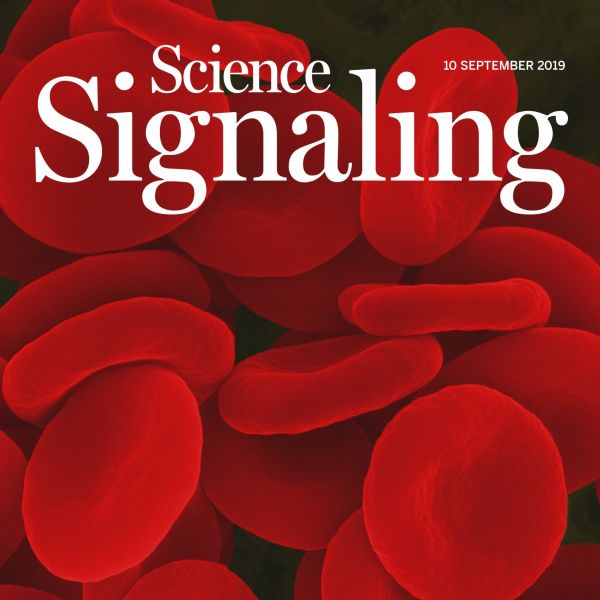Oct 25, 2019
Paper by MCIBS Grad Laura Bennett Inspires Journal Cover
Laura Bennett's investigation into the effects of inflammation, done with advisor Robert Paulson, was featured on the cover of Science Signaling last month.

A September 2019 issue of the journal Science Signaling featured artwork inspired by the work of Dr. Laura Bennett, a recent graduate of the Huck Institutes' Molecular, Cellular, and Integrative Biosciences (MCIBS) graduate program. Her paper appeared in the journal.
Bennett, now working in a postdoctoral position with Dr. Nancy Speck at the University of Pennsylvania School of Medicine, was studying the production of red blood cells in the context of inflammation with her advisor at Penn State, Dr. Robert Paulson.
"The paper deals with how the body responds to a particular type of anemia called the anemia of chronic disease or the anemia inflammation," explained Paulson. "After iron deficiency anemia, it's probably the most common form of anemia. It is a secondary consequence of an infection or trauma that causes inflammation. Normally the bone marrow makes red blood cells (RBCs), and in fact most of the bone marrow output is dedicated to RBC production. In response to infection or trauma that causes inflammation, the bone marrow shifts to make cells that will fight infection and promote wound healing. Because of that shift, fewer RBCs get made and patients develop anemia."
According to their research, the spleen acts as a backup to the bone marrow, kicking into gear when the body is under stresses that require increased production in white blood cells. The journal cover inspired by Bennett's work depicts a page chock full of red blood cells ready to transport oxygen around the body.
"Our paper showed how the body responds to that loss of RBC production in the bone marrow," Paulson continued. "We showed that production shifts to the spleen and identified a new mechanism that regulates the temporary production of RBCs in the spleen. If mice are unable to make RBCs in the spleen, then they are unable to cope with this loss of bone marrow RBC production."
"We thought this was really interesting because it’s almost acting as a biological fail safe to ensure red blood cells continue to be made in the short term until blood production (hematopoiesis) returns to balanced normal levels," said Bennett. "Normal production is inhibited because you need to make more myeloid cells (white blood cells) to fight the infection and deal with the cause of the inflammation, but you can’t stop making red blood cells because they are responsible for delivering oxygen to all your tissues."
"This project was a long time in the making and it was really challenging because it was a new avenue of research in the lab. Bob is an expert on stress erythropoiesis (the alternative method of producing red cells during times of stress), but how it was affected by inflammation was largely unknown and no one else in the lab was working on that. It was really exciting, because it was essentially uncharted territory, but it also meant that we also ended up pursing a lot of different leads before we landed on the data that ended up being the bulk of our Science Signaling paper."